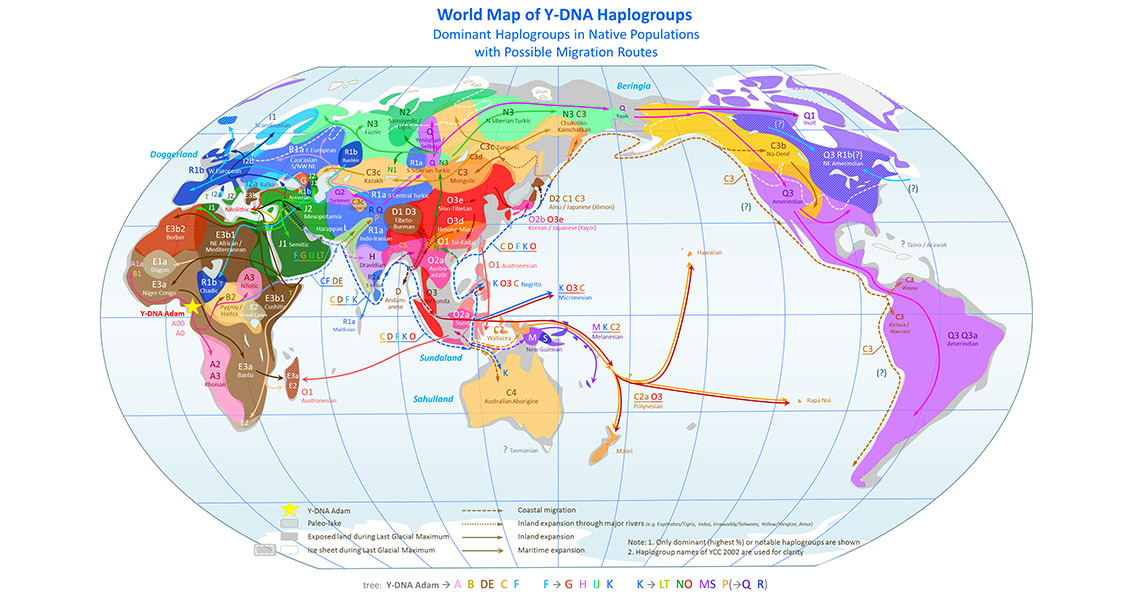<![CDATA[Migration into new, unspoiled lands and advances in technologies that made life easier might have driven massive population explosions in ancient males, according to a new DNA research study. New research into global genetic variation in the Y chromosome, the human DNA fragment that is present only in genetic males, has revealed several population explosions across five of the seven continents between four thousand and 55 thousand years ago. The study incorporated the Y chromosomes of men pulled from 26 different populations across the globe courtesy of the 1000 Genomes Project; more than 40 scientists from across four continents analyzed the differences in the Y chromosome of at least 1200 different samples. Stanford University’s Dr. David Poznik, the first listed author on the research paper, revealed in a press release from the Wellcome Trust Sanger Institute that more than 60,000 positions were identified where a single DNA letter was replaced with another in men with living modern descendants. Even more complex DNA variants were discovered in the thousands as well, Dr. Poznik added, stating that the data should provide excellent resources for additional genetic studies in the future. The analysis has much to reveal about the lives of ancient males around the globe, as the Y chromosome is exclusively passed from father to son. The 1200+ Y chromosomes studied were used to build a “family tree” of sorts, showing interrelations and revealing a single ancestor that lived around 190,000 years in the past. The patterns were revelatory not just because of how far back a common ancestor was traced. In fact, the possibly more intriguing point made by the researchers is that there is evidence of explosive increases in male populations carrying certain types of Y chromosomes over the course of a handful of generations. The earliest of these explosions in male numbers occurred between 55,000 and 50,000 years in the past across Europe and Asia. An additional large prehistoric expansion occurred in the Americas around 15,000 years ago, while East Asia, South Asia, Western Europe and sub-Saharan Africa also experienced male population booms between 8,000 and 4,000 years in the past as well. The reasons behind the earliest population booms seem to be relatively straightforward, as the researchers believe much of the new opportunities represented by the first waves of migration into a given geographical area would have provided high numbers of available resources and little to no competition, ideal conditions for quick population spread. However, the later expansions have been less easy to qualify, according to the Sanger Institute’s Dr. Chris Tyler-Smith, the overall leader of the research project. Dr. Tyler-Smith feels that the best explanation for these later expansions is that technological advances could have played a pivotal role, especially advances that could be controlled by relatively small groups of individuals. Organized warfare, metalworking, and wheeled transport are all good examples of the kinds of advances that might have been at play during these expansions; now with a baseline genetic data set, additional investigations can be launched, Dr. Tyler-Smith added. The 1000 Genomes Project, as well as all of the data collected and the samples used in the recent study, are open to the public and can be freely used by other interested scientists and researchers. The new study is available online from the journal Nature Genetics Image courtesy of Wikimedia Commons user: Chakazul]]>
Migration, Technology Behind Ancient Male Population Explosions
